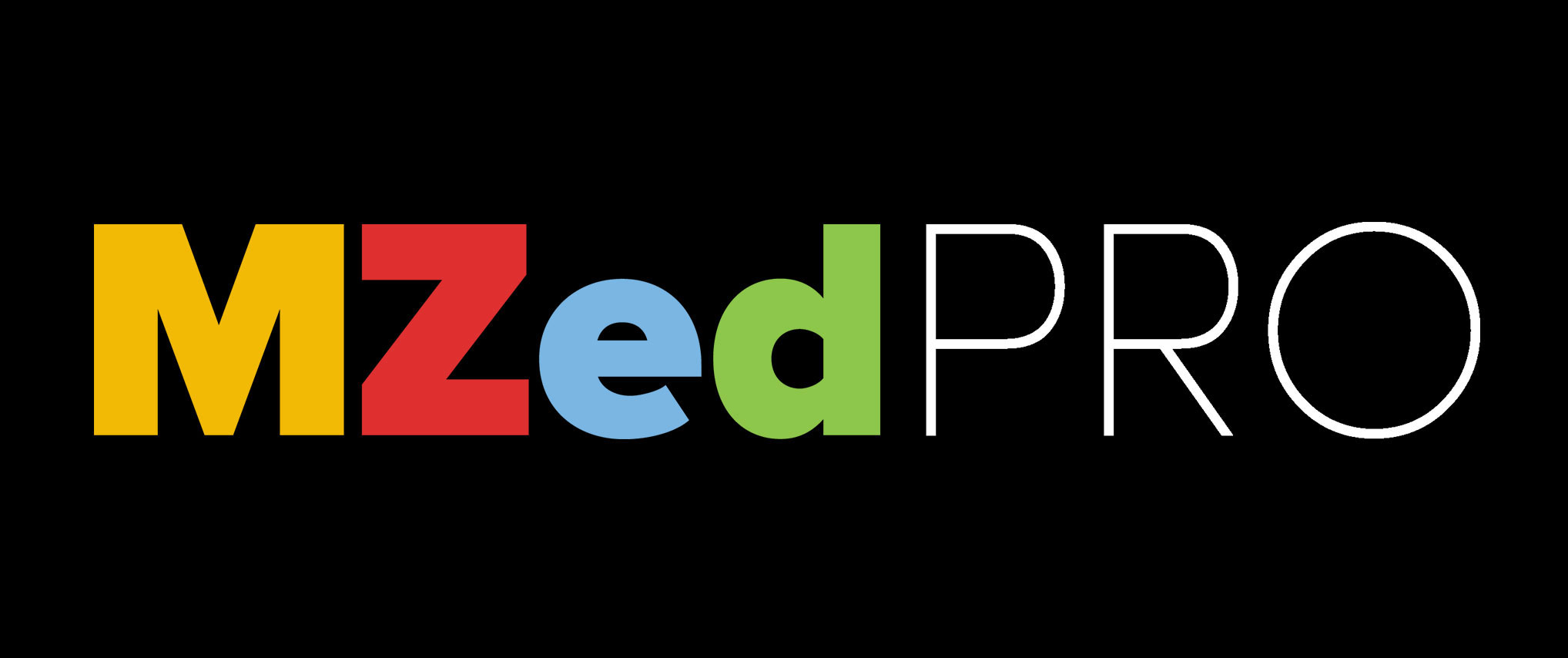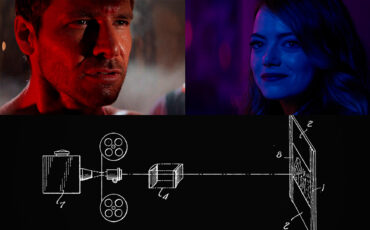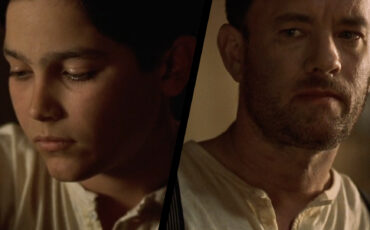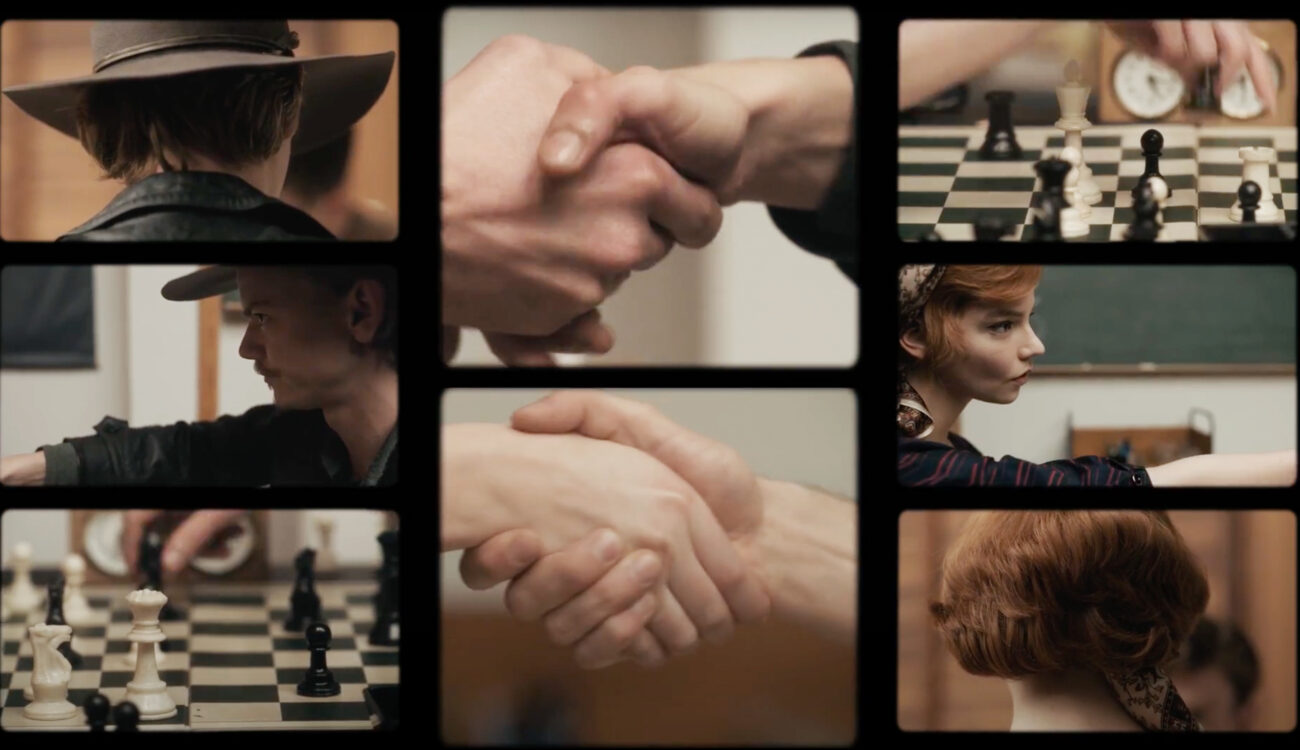
Split screens. Collages made of moving images. We see them so much on TikTok, Instagram, and YouTube nowadays that they seem a useful modern invention. However, this notion is incorrect. Split screens have existed since almost the beginning of cinema and are – above all – a mighty tool in the editor’s kit. What are they at the core? A fancy stylistic choice? A magic trick to enhance suspense? A chance to tell a story from different perspectives? Let’s take a look at a vast collection of examples, from classic masterpieces to contemporary series, and find out.
The truth is: In knowing hands, split screens in films can follow different goals. They are an editing technique, after all, and as with every technique, they require intention. Why do you decide to put two or more shots on the same screen simultaneously? What effect should it create?
How it started
If you are interested in visual effects and divine tricks filmmakers have come up with throughout cinema history, you are definitely familiar with the French silent short “The Four Troublesome Heads” by Georges Méliès. It runs for about 50 seconds and was released as far back as 1898:
Obviously, the audience was stoked and considered this trick nothing short of a wonder. Méliès featured one of the first known uses of the multiple exposure of objects on film. Of course, it’s not something that we would strictly call a “split screen” nowadays, but the underlying idea is the same. The filmmaker combines several images within one frame to create an effect or tell a more compelling story.
The Cutting Edge
All that falls into the split-screen category
There have been different approaches ever since. Split diopter, or the possibility to have in focus two distant planes simultaneously, is one of them. Another was using three projectors simultaneously to create an ultra-wide shot on adjacent screens in the theatre – a technique called Cinerama (preceded by Polyvision, which was used in “Napoleon” in 1927).
And then, of course, there are “classic” split screens, showing different shots or perspectives simultaneously. They became particularly popular in the 1950s and 1960s and were often used to depict phone conversations.
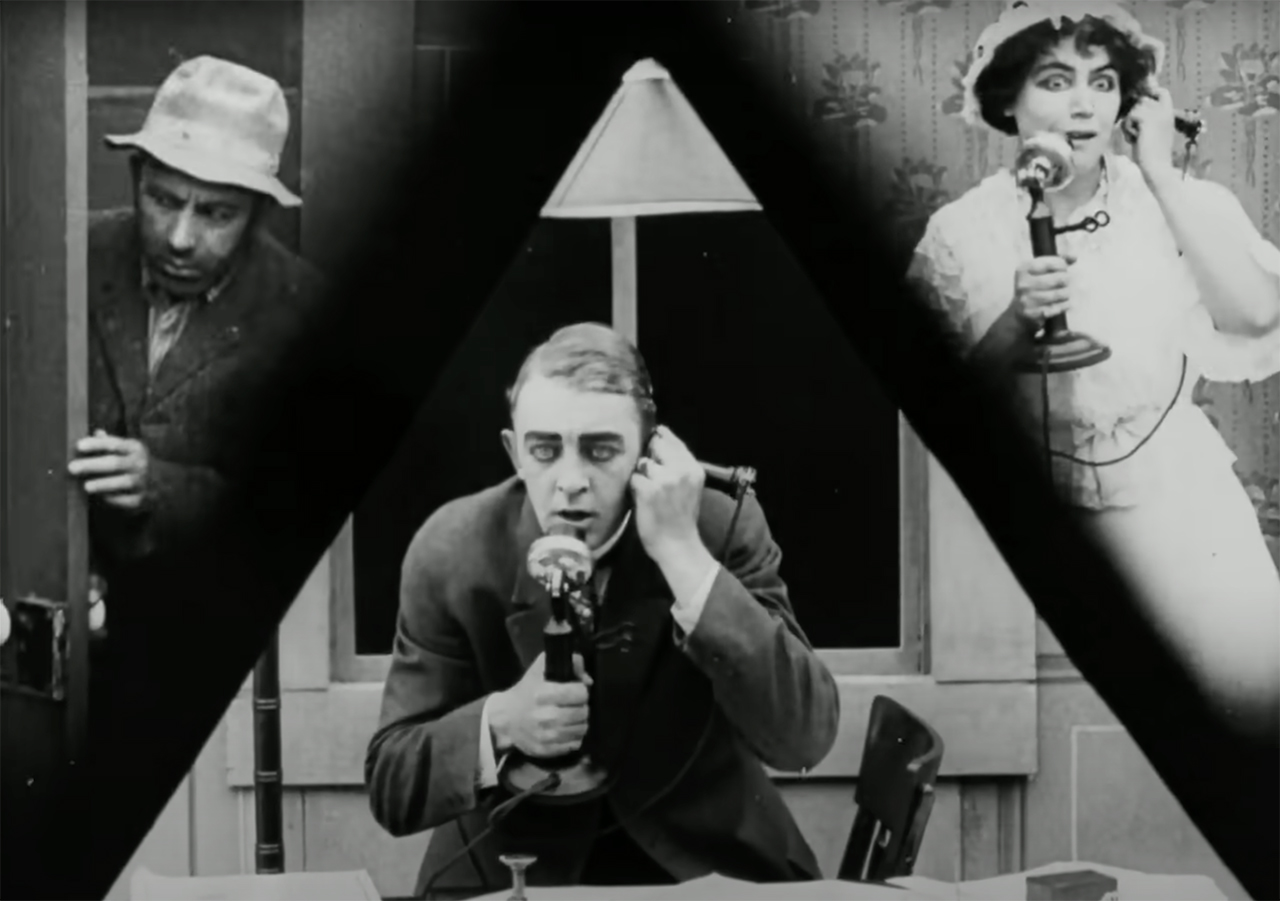
But not only. Here is an example from 1916 featured in the Russian production “The Queen of Spades.” The split screen in this silent film shows the dreams of the protagonist side-to-side with his face, creating a visual story without words:

Before we could rely on digital editing, split screens were achieved with the help of an optical printer. Filmmakers combined two or more frames, filmed separately, by copying them onto the same negative. (This process was called “composite,” by the way – a widely-used term in the VFX field nowadays).
An invisible split: a technical solution
Basically, the main idea of split screens is to show multiple actions within one frame, creating either parallels or juxtapositions. However, as we already saw in the example with heads above, there was (and is) such a thing as an invisible split. Let’s look at it for a brief second.
Invisible split is merely a technical solution that allows us to seamlessly combine different shots or takes without the audience noticing it. Why would filmmakers use it? For instance, when one actor plays several roles, like in a famous example from the original “The Parent Trap” (1961, although the same technique was also used in its remake later on):
It can also be a solution for a particularly challenging shot with a lot of elements and choreography (like the ones we know from Wes Anderson’s films). Sometimes, filmmakers also rely on the invisible split to distill the best performance from two different actors out of different takes.
That is, however, not what we are after in this article. So, let’s move on to a more fascinating topic: How to use split screens in films for the sake of storytelling.
Proximity effect through split screens
And straight on to a famous example of a visible split screen in “Kill Bill: Vol. 1.” The Bride, depicted by Uma Thurman, lies in a coma. She has survived a brutal attack, but her enemy, Bill, sends another one of the Deadly Vipers to finish her. Dressed as a nurse, the assassin prepares a lethal injection and heads to the Bride’s hospital bed. We see these moments in a carefully constructed split screen. Let’s rewatch it together (from 00:55):
What do you feel when you see these shots sharing the frame? My answer is “growing anxiety”. Although the assassin and the victim are not in one room yet, the split screen brings them together and suggests the imminent physical proximity. There is even a moment when a needle almost touches the arm of the sleeping Bride, stopping only at the division line between the frames.
In this way, the writer/director Tarantino exploits the elasticity of time and place that the split screen provides and is able to heighten the suspense of the scene.
From the book “Cinematic Storytelling” by Jennifer Van Sijll
Split screens showing multiple perspectives
Thus, just like intercutting between scenes, a split screen creates the idea of simultaneous action. However, we don’t need different scenes for this editing technique; we can use shots from the same one. Another great feature of split screens is that they can give the audience a glimpse from different perspectives simultaneously. A masterfully done example here would be the prom scene from “Carrie” (with a split screen sequence starting from 01:55):
The editor could go for a classic “shot–reverse shot” in this scene, but he decided against it. Instead, we see action and reaction simultaneously, emphasizing Carrie’s omnipresent powers. Also, when so much happens on screen at the same time, we – the viewers – are swamped with visual information and feel overwhelmed and anxious. Was it an intended effect? I bet!
Perspective is a significant tool in filmmaking, and if you are not aware of it yet, check out our article here. We would also strongly recommend Tal Lazar’s course “Cinematography for Directors” on MZed.com, which explores this technique fully.
Relationships between characters
Split screens can also be used to show relationships between characters, underline their connection to each other, or, on the contrary, create a silent competition. In the miniseries “The Queen’s Gambit,” there is a curious scene that creatively relies on split screens. The main character, Beth, meets another chess prodigy, Benny, during the US Chess Championship. And the show begins! We see them progressing through the competition separately but in beautifully constructed splits until they come to face each other in the grand finale:
Shot after shot, we see both Benny and Beth playing against other opponents. Often, split screens are symmetrical here, showing their actions mirrored and using the same image composition. What does it mean? Well, for the first time in the series, Beth meets someone who can actually beat her, someone who has similar powers in her world and who is mighty enough. His perspective suddenly matters, and there is a lot at stake for both of them. Split screens add to the overall intense competitive feeling here, but they are also so fun to watch! (Let’s please take a moment to appreciate the idea of putting close-ups of players into the overhead shot of a chessboard).
Split screens as a stylistic choice
Naturally, split screens can also be a mere stylistic choice to create a specific aesthetic or atmosphere. For instance, they blend in harmoniously in “Scott Pilgrim vs. the World,” which is a comic adaptation with a myriad of such effects:
Here, split screens remind us of layouts that we are accustomed to in comic books and magazines and, therefore, help recreate the intended look and feel.
Endless ways to use split screens
As you see, there are a thousand-and-one ways to use split screens in films. In fact, entire movies can be told solely through them (“Conversations with Other Woman,” for example). It doesn’t matter whether you combine two shots or more when you understand the purpose and effect of this tool. Letting multiple images share the frame can create a collage of emotions. Do you remember the ending of “Love Actually”? It’s not about specific characters and their stories anymore. It just gives us a feeling of meeting someone we love at the airport after a long time apart.

Learn more filmmaking as an MZed Pro starting at $29 / month
If you liked these educational insights into split screens in films, you will LOVE being an MZed Pro member. As one of them, you have access to many hundreds of hours of filmmaking education. Plus, we’re constantly adding more courses (several are in production right now).
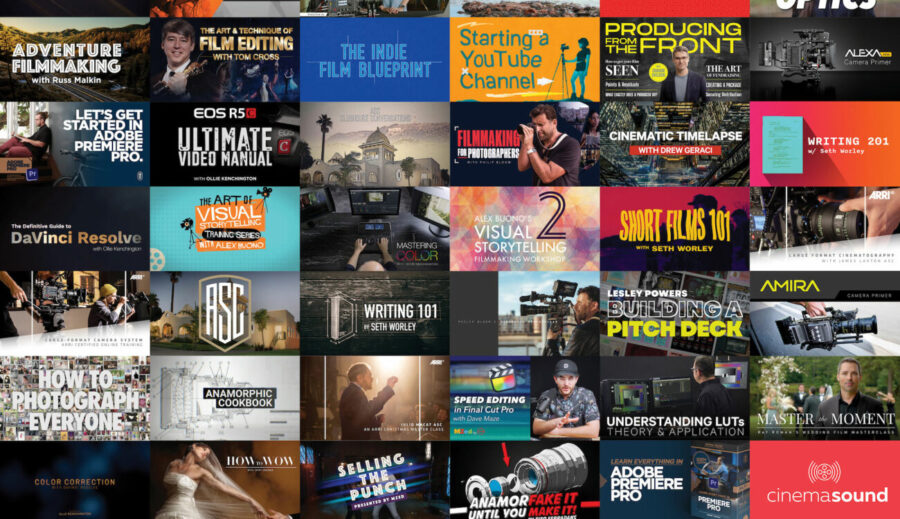
Starting at just $29/month (billed at $349 in the first year, $199 from the second year, or billed monthly at $49), here’s what you’ll get:
- 58+ courses, over 750+ high-quality lessons.
- Highly produced courses from educators who have decades of experience and awards, including a Pulitzer Prize and an Academy Award.
- Unlimited access to stream all content.
- Offline download and viewing with the MZed iOS app.
- Discounts to ARRI Academy online courses, exclusively on MZed.
- Most of our courses provide an industry-recognized certificate upon completion.
- Purchasing the courses outright would cost over $9,500.
- Course topics include cinematography, directing, lighting, cameras and lenses, producing, indie filmmaking, writing, editing, color grading, audio, time-lapse, pitch decks, and more.
- 7-day money-back guarantee if you decide it’s not for you (on annual billing only).
So, what do you think about split screens in films? If you use them in your projects frequently, then how and why? Are there any other film examples of the creative application of split screens that you adore? Please, share your thoughts with us in the comments below!
Feature image: a film still from the miniseries “The Queen’s Gambit”.
Full disclosure: MZed is owned by CineD.
Additional source: “Cinematic Storytelling” by Jennifer Van Sijll, 2005.



